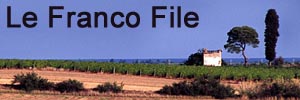Today would be a conservative 160kms from Hanmer Springs to Christchurch. Apart from a 10-minute drive to hand Busby back to Maui on Monday, that’d be it.
We’d spent a relatively sloping night in Busby which leads me to comment on another feature of New Zealand camping. In Europe, certainly Britain, it is usual to use levelling ramps when pitching ones unit on sloping ground. Caravans need just one, to level from side to side because the nose jockey wheel levels adjusts up and down to level them lengthwise. Campervans generally carry two levelling ramps to be able to level in two axes. Until two days ago, after 3½ weeks of camping in New Zealand, I had not seen a single levelling ramp in use. We did see a pair, being used by a private camper van at the DOC site at Marble Hill. I was really quite amazed; the ground was frequently not level. Why does one need to be level? Well, doors swing on hinges downhill, sleeping in a sloping bed can be a challenge (or enjoyable, depending on the company), and cooking when all the oil flows to one edge of the frying pan is real pain in the kitchen. Why don’t they bother here? It beats me.
We began with two relaxing cappuccini [just showing off] in Hanmer Springs. Francine’s brother had reported that Hanmer Springs was “tired looking”. Not so, I’ve rarely seen anywhere less tired looking. I do find the letter grouping difficult, though: Hamner Springs would roll off the tongue better than Hanmer – N followed by M does not seem natural.
Before beginning our journey proper, we indulged in a 2km/1hr walk through Hanmer Heritage Forest which we completed in 30-minutes. Well, how can you make 2kms take 60 minutes? Maybe if we’d found any orchids for Francine to point her camera at but regrettably we didn’t.

 Finally underway, we were heading for Christchurch – scary spiders, a big city. After a supermarket stop in Amberley, we followed a brown sign declaring “Scenic Inland Route”, to avoid the busy main road. “The Scenic Inland Route” turned out to be mostly straight, dull and decidedly un-scenic. It was, however, inland. By going inland it led us first to a picnic spot for lunch followed by a spectacle neither of us had ever before witnessed, a game of polo at Rangiora. How the rich live. We watched the poor old polo ponies, tails bound so they couldn’t swish away flies, being put through their paces before hitting the road again.
Finally underway, we were heading for Christchurch – scary spiders, a big city. After a supermarket stop in Amberley, we followed a brown sign declaring “Scenic Inland Route”, to avoid the busy main road. “The Scenic Inland Route” turned out to be mostly straight, dull and decidedly un-scenic. It was, however, inland. By going inland it led us first to a picnic spot for lunch followed by a spectacle neither of us had ever before witnessed, a game of polo at Rangiora. How the rich live. We watched the poor old polo ponies, tails bound so they couldn’t swish away flies, being put through their paces before hitting the road again.
For the second time on our travels, we ended up on a road unknown to Kiwi Satnav; it was a motorway skirting Christchurch. Kiwi’s plot line went dotted, never a good sign, as our new route went off piste. As we approached known roads passing beneath us, with no exit in sight, Kiwi Satnav excitedly instructed us to “turn lift” [left, you may remember, for those with no Kiwi accent]. “I can’t bloody turn lift”, I thought. “Nor can I turn left, right or around.” The short motorway which, I suspect, may be New Zealand’s only motorway, dumped us near the airport. It was also near a second wetland reserve that we wanted to visit so, as they say over here, it was “all good”.
The wetland was OK but, as expected, we saw nothing new, just the standard two damselflies and a dragonfly which refused too be caught on pixels but which I suspect was the local Aeshna. As an odonata enthusiast, I could never live in New Zealand with so few species to observe. That’s true for wildlife in general here, really; there’s a paucity of it and most of what one does see is European and imported. It’s a country for scenery and, as such, has few equals, I think.
This last stop was within spitting distance of our campsite. We’ve checked into the Top 10 site at Christchurch and, perhaps because we’re here for two nights, we have a relatively spacious pitch with spikey plants between us and the neighbouring units. Reviews complaining about being able to shake hands across the minimal gaps had made me dread it. Where we are is actually fine and I breathed a sigh of relief. Also the pitch is level, otherwise, in the absence of any levelling ramps, I’d have to drive one wheel onto the camp cat to get Busby horizontal; it’s a fat cat and should provide considerable flexibility. If minor adjustment is needed, there is a second, thinner cat that might come in handy under another wheel.




















Recent Comments